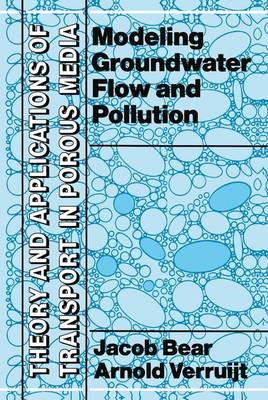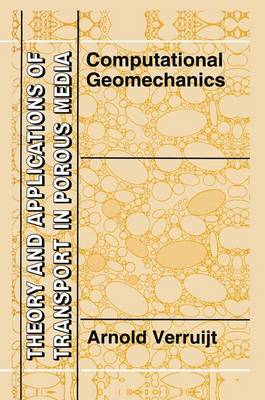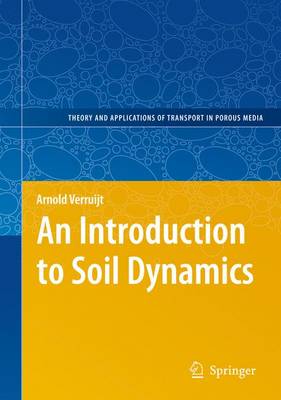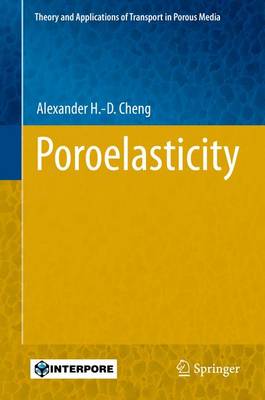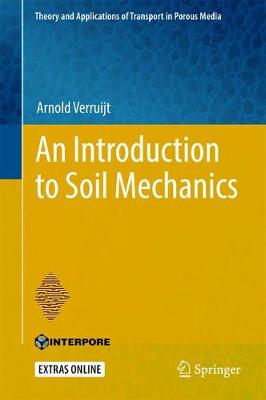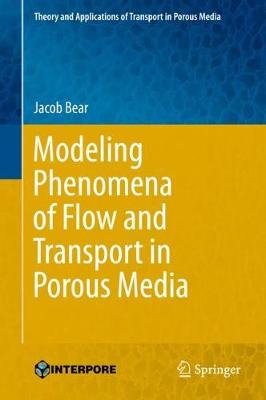Theory and Applications of Transport in Porous Media
8 primary works
Book 2
Modeling Groundwater Flow and Pollution
by Jacob Bear and Arnold Verruijt
Book 4
Introduction to Modeling of Transport Phenomena in Porous Media
by Jacob Bear and Y. Bachmat
Book 7
Book 23
Modeling Groundwater Flow and Contaminant Transport
by Jacob Bear and Alexander H.-D. Cheng
In many parts of the world, groundwater resources are under increasing threat from growing demands, wasteful use, and contamination. To face the challenge, good planning and management practices are needed. A key to the management of groundwater is the ability to model the movement of fluids and contaminants in the subsurface. The purpose of this book is to construct conceptual and mathematical models that can provide the information required for making decisions associated with the management of groundwater resources, and the remediation of contaminated aquifers.
The basic approach of this book is to accurately describe the underlying physics of groundwater flow and solute transport in heterogeneous porous media, starting at the microscopic level, and to rigorously derive their mathematical representation at the macroscopic levels. The well-posed, macroscopic mathematical models are formulated for saturated, single phase flow, as well as for unsaturated and multiphase flow, and for the transport of single and multiple chemical species. Numerical models are presented and computer codes are reviewed, as tools for solving the models. The problem of seawater intrusion into coastal aquifers is examined and modeled. The issues of uncertainty in model input data and output are addressed. The book concludes with a chapter on the management of groundwater resources. Although one of the main objectives of this book is to construct mathematical models, the amount of mathematics required is kept minimal.
Book 24
Book 27
This book treats the mechanics of porous materials infiltrated with a fluid (poromechanics), focussing on its linear theory (poroelasticity). Porous materials from inanimate bodies such as sand, soil and rock, living bodies such as plant tissue, animal flesh, or man-made materials can look very different due to their different origins, but as readers will see, the underlying physical principles governing their mechanical behaviors can be the same, making this work relevant not only to engineers but also to scientists across other scientific disciplines.
Readers will find discussions of physical phenomena including soil consolidation, land subsidence, slope stability, borehole failure, hydraulic fracturing, water wave and seabed interaction, earthquake aftershock, fluid injection induced seismicity and heat induced pore pressure spalling as well as discussions of seismoelectric and seismoelectromagnetic effects. The work also explores the biomechanics of cartilage, bone and blood vessels.
Chapters present theory using an intuitive, phenomenological approach at the bulk continuum level, and a thermodynamics-based variational energy approach at the micromechanical level. The physical mechanisms covered extend from the quasi-static theory of poroelasticity to poroelastodynamics, poroviscoelasticity, porothermoelasticity, and porochemoelasticity. Closed form analytical solutions are derived in details.
This book provides an excellent introduction to linear poroelasticity and is especially relevant to those involved in civil engineering, petroleum and reservoir engineering, rock mechanics, hydrology, geophysics, and biomechanics.
Book 30
This textbook offers a superb introduction to theoretical and practical soil mechanics. Special attention is given to the risks of failure in civil engineering, and themes covered include stresses in soils, groundwater flow, consolidation, testing of soils, and stability of slopes.
Readers will learn the major principles and methods of soil mechanics, and the most important methods of determining soil parameters both in the laboratory and in situ. The basic principles of applied mechanics, that are frequently used, are offered in the appendices. The author's considerable experience of teaching soil mechanics is evident in the many features of the book: it is packed with supportive color illustrations, helpful examples and references. Exercises with answers enable students to self-test their understanding and encourage them to explore further through additional online material. Numerous simple computer programs are provided online as Electronic Supplementary Material.
As a soil mechanics textbook, this volume is ideally suited to supporting undergraduate civil engineering students.
"I am really delighted that your book is now published. When I "discovered" your course a few years ago, I was elated to have finally found a book that immediately resonated with me. Your approach to teaching soil mechanics is precise, rigorous, clear, concise, or in other words "crisp." My colleagues who share the teaching of Soil Mechanics 1 and 2 (each course is taught every semester) at the UMN have also adopted your book."
Emmanuel DetournayProfessor at Dept. of Civil, Environmental, and Geo-Engineering, University of Minnesota, USA
Book 31
